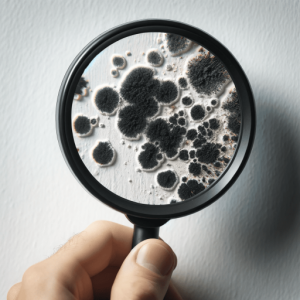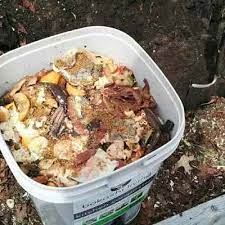Breeding Grounds for Beneficial Bugs (and Occasionally Unwanted Visitors)
Chucking your veggie scraps and leftovers into a compost bin is a top-notch way to reduce waste and create nutrient-rich fertiliser for your garden. But even the most dedicated composter can encounter an unexpected guest: mould. While it cops a bad rap, mould actually plays a valuable role in the composting process, breaking down organic matter. However, excessive mould growth in a kitchen compost bin can be unsightly, smelly, and potentially harmful to your health.
Understanding Mould in Kitchen Compost Bins
Several things can contribute to mould growth in your kitchen compost bin:
- Moisture Imbalance: If your compost is too wet, it’s like a five-star hotel for mould. Aim for a consistency similar to a damp sponge.
- Limited Airflow: Bins that are sealed tight or don’t have enough ventilation can trap moisture and hinder decomposition, creating a mouldy paradise.
- Food Choices: Adding fatty or oily scraps, meat products, or dairy can attract unwanted microbes and throw the composting ecosystem out of whack.
Identifying Mould Growth
While some mould is a natural part of the composting process and even beneficial, too much can be a problem. Here are some signs to watch out for:
- Visible Patches: Fuzzy white, green, or black patches on the compost material.
- Unpleasant Odours: A strong, musty, or ammonia-like smell coming from the bin.
- Fruit Flies: An influx of fruit flies can indicate an overly moist environment that’s prime real estate for mould.
Creating a Mould-Free Composting Environment
Thankfully, there are ways to minimise and manage mould growth in your kitchen compost bin:
- Maintain Proper Moisture Balance: Regularly check the moisture content of your compost. If it feels too wet, add dry materials like shredded paper or cardboard to soak up the excess moisture.
- Ensure Proper Airflow: Use a bin with ventilation holes or turn your compost regularly to improve air circulation and prevent moisture build-up.
- Choose the Right Food Scraps: Stick to composting suitable materials like fruit and vegetable scraps, coffee grounds, and eggshells. Avoid adding meat, dairy, or oily products.
- Brown to Green Ratio: Mix your compost in a ratio of 3 parts brown materials (like dried leaves and twigs) to 1 part green materials (like veggie scraps) for optimal decomposition and moisture balance.
- Empty Regularly: Empty your compost bin regularly to prevent the build-up of organic matter and the associated risk of mould growth.
Remember: Even with the best care, some mould growth might still occur in your compost bin. If the mould is minimal and doesn’t have a strong odour, it’s usually nothing to worry about. However, if you experience excessive mould growth or unpleasant smells, consider adjusting your composting practices or seeking advice from experienced composters.
By understanding the factors that contribute to mould growth and implementing these tips, you can create a thriving compost bin that effectively breaks down food scraps while minimising unwelcome guests in your kitchen.


